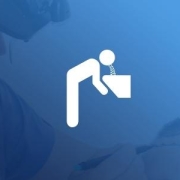Solarium After Hair Transplant
Solarium after the hair transplant, will have to wait for a while. Because Solarium tanning has the same effect as sun tanning. The only difference is that the lights in the solarium are combined and filtered differently to ensure greater reliability. For face application, UVA lamps and reflectors are used. Together with UVA lamps, UVB lamps are used in solarium beds or cabinets. Therefore, we can say that the solarium and the sun are the same. In other words, you should protect yourself from the solarium in the same way you need to be protected from the sun.
Hair transplant surgery is a permanent treatment for both men and women who are experiencing hair loss. You should avoid sun exposure for a few months following hair transplant surgery. It takes time for your scalp to heal and the follicles to take root. Sun exposure can harm not only the skin but also the hair follicles. This could lead to a failed surgery and the need for additional treatment.
Skin Impairment
Incisions in any part of the skin become more light sensitive. They are especially vulnerable to the ultraviolet rays emitted by the sun and tanning beds. Sun exposure may impede healing and result in excessive scarring. For at least a few months after surgery, transplanted skin is also unable to protect itself from sun exposure. Chromatophores are cells found in our skin.
These cells are in charge of skin pigmentation. When exposed to sunlight, chromatophores darken the skin to protect it from further damage. These cells either die or go dormant when skin is removed and transplanted. These cells can take several months to regenerate in newly transplanted grafts. In the meantime, the transplanted skin is more vulnerable to sun damage.
Solarium Advantages
- It treats some types of psoriasis by penetrating the skin’s lower layer.
- It’s used to treat acne and acne scars on the skin.
- It works well for cramps caused by a calcium deficiency.
- While UVB rays in the sun cause blistering and peeling of the skin, this is not the case in solariums due to the optimized rays used.
- Endorphin (happiness hormone) secretion is stimulated by the solarium.
- Of course, in addition to all of these advantages, there are rules and requirements to be followed.
Hair Follicle Impairment
Hair transplants involve more than just the surface layer of the skin. While the epidermis, or surface layer, heals relatively quickly, deeper tissues can take much longer to heal. Sun damage can penetrate the epidermis, causing damage to the underlying tissues and hair follicles that have not yet healed. This could lead to the failure of a hair transplant.
How Long Should you Stay Out of the Sun?
You should wait at least four months after hair transplant surgery to protect your scalp from the sun. We recommend wearing a hat that completely covers the planting area during this time. Sunscreen should be avoided until the incisions are completely healed. She may recommend a hat with at least SPF 30 sunscreen or use for a few more months after all of the incisions have healed. Following these post-surgery instructions will improve your chances of transplant success.
Why is it Critical for Patients to Avoid Exposure to Sunlight Following Hair Transplantation?
The skin is subjected to some surgical trauma during transplantation. In this case, direct sunlight can be hazardous and may cause damage to the area where the grafts are planted. It is important to note that the transplanted skin typically cannot protect itself from direct sunlight exposure in the weeks following hair transplantation. This is usually due to overexposure of the skin to sunlight, and the chromatophores that protect it die or become dormant during the transport process. It will take time to renovate and improve. Too much direct sun exposure not only damages the treated skin’s surface, but it can also affect deeper tissues and cause serious damage.
Is it Safe to Sunbathe?
As previously stated, the sun can be harmful and can have a negative impact on the results of Hair Transplantation. Many Hair Transplant experts agree that it is critical to avoid sunlight for at least 2-4 weeks following the procedure.
There are many times in our lives when we need to be exposed to sunlight, such as when we move from one location to another or when we work outside, but if the purpose of the exposure is to sunbathe, this will be a barrier to healthy hair. Sunbathing is not a safe activity at this time and should be avoided until the healing process is complete.
We do not recommend swimming while you are healing and unprotected at sea or in a pool. The sun causes sweating and is noted as an impediment to adapting to the scalp grafts. The most important question at this point is how long you should avoid the sun after getting a hair transplant.
What you can’t do after a hair transplant?
For the first few days after the procedure, it’s important to avoid any activities that may cause sweating or excessive movement of the scalp, such as strenuous exercise or heavy lifting.
Additionally, patients should avoid wearing hats or any other headwear that may rub against the scalp, as well as exposure to direct sunlight or extreme temperatures.
It’s also important to avoid smoking or drinking alcohol, as these activities can interfere with the healing process and increase the risk of complications.
Finally, it’s important to follow the post-operative instructions provided by the surgeon, including any medication regimens and follow-up appointments. With proper care and attention, patients can achieve the best possible results from their hair transplant procedure.
Reference:
https://www.chicagohairinstitute.com/blog/2017/02/20/avoiding-sun-exposure-after-hair







